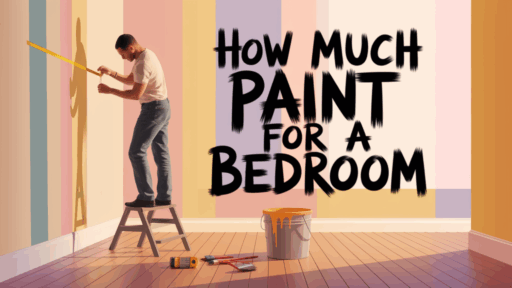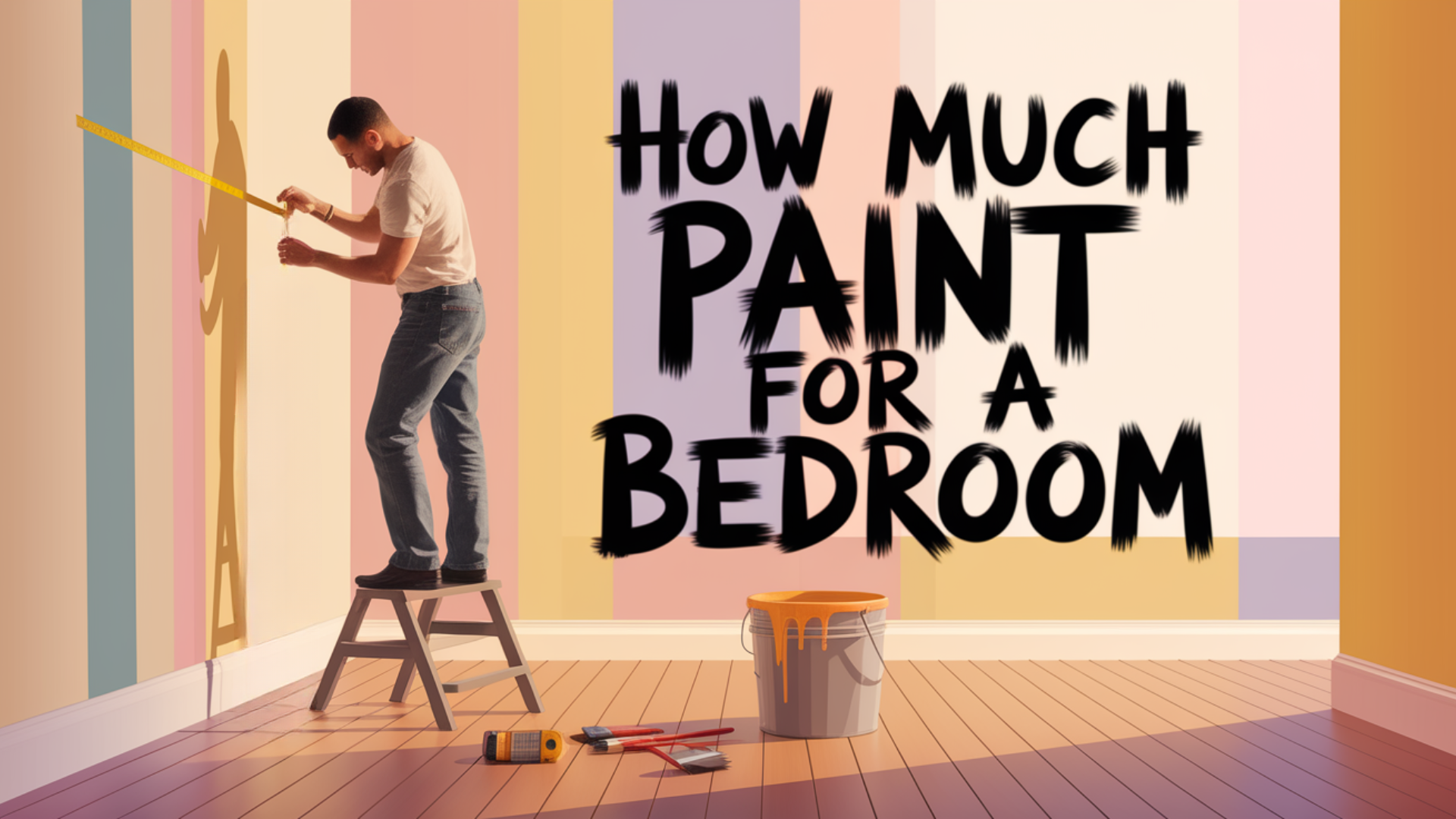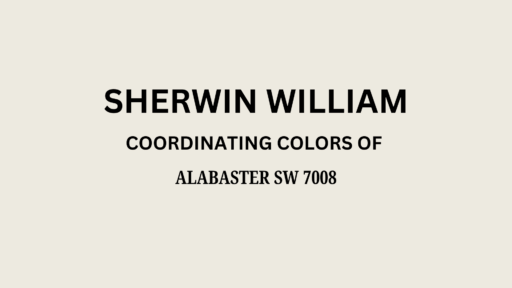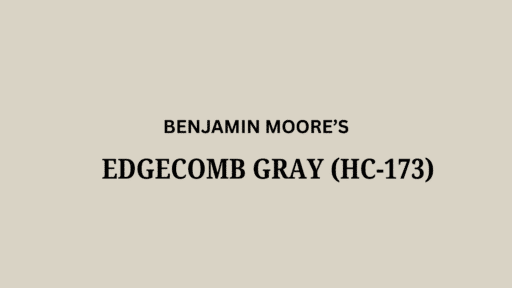Dreaming of a bedroom makeover but scared of running out of paint mid-project? Figuring out how much paint for a bedroom you’ll need doesn’t have to be a headache!
Measure your walls, ceiling, and trim to avoid wasting money or making emergency store runs. Most bedrooms require 1-2 gallons total, with one gallon covering about 350-400 square feet per coat.
Remember to subtract doors and windows from your calculations since you won’t paint these areas.
Factor in wall texture, too—rough surfaces need up to 30% more paint than smooth ones. Dark colors covering light walls? You’ll likely need extra coats.
Taking time to calculate correctly means a smoother painting experience with no frustrating interruptions.
Understanding Paint Quantities for Your Bedroom
Determining the right amount of paint for your bedroom project is crucial for both your budget and timeline. Getting it right the first time prevents frustrating mid-project store runs and avoids wasting money on excess paint that might sit unused for years.
Paint Coverage Explained
Paint coverage shows how far your paint will stretch. On paint cans, you’ll see numbers like “square meters per litre” – this tells you how much wall a litre covers.
It’s like spreading jam on bread – some paints go further than others. For bedroom walls, most paints cover about 10 square meters per litre.
This information helps you buy the right amount. Keep in mind that painting over dark colors or using darker paints might require extra coats, meaning you’ll need more paint overall!
How Coverage Numbers Impact Your Shopping List?
When planning how much paint to buy for your bedroom, don’t just measure the floor space. Different paint brands cover differently, and premium paints often require fewer coats.
Most rooms need two coats for an even color. Remember to subtract space for windows and doors but add extra for trim and touch-ups. Getting these calculations right means no emergency trips to the store mid-project!
Determining How Much Paint You’ll Need for Bedroom Walls

Calculating the correct amount of paint for your bedroom is a simple process that, when approached methodically, saves both time and money.
By following these straightforward measurements and adjustments, you’ll avoid the frustration of mid-project supply shortages or the waste of excess unused paint.
1. Properly Measuring Wall Space
- Grab a tape measure and notebook to record all measurements accurately.
- Measure each wall’s height from where the floor meets the wall to the ceiling.
- Find the width of each wall by measuring from corner to corner.
- Calculate each wall’s area by multiplying its height by width.
- Add up all wall areas to get the total space that needs paint.
2. Adjusting for Openings and Fixtures
Don’t overestimate your paint needs! Measure each window and door in your bedroom and multiply the height by the width to determine their areas.
A typical bedroom door takes up about 1.5 square meters, while windows range from 1 to 2 square meters each.
Subtract these measurements from your total wall area. This adjustment helps you buy just the right amount of paint and avoid unnecessary leftovers.
3. Real-World Calculation Example
Consider a bedroom measuring 3m × 4m with 2.4m ceilings. Two walls measure 3m × 2.4m = 7.2m² each, and the other two walls are 4m × 2.4m = 9.6m² each. Thus, the total wall area equals 33.6m².
Subtracting one door (1.5m²) and one window (2m²) gives you 30.1m² to paint. Since you’ll need two coats, prepare to cover m² total surface area of 60.2 m2.
How Much Paint for A Bedroom Ceiling?
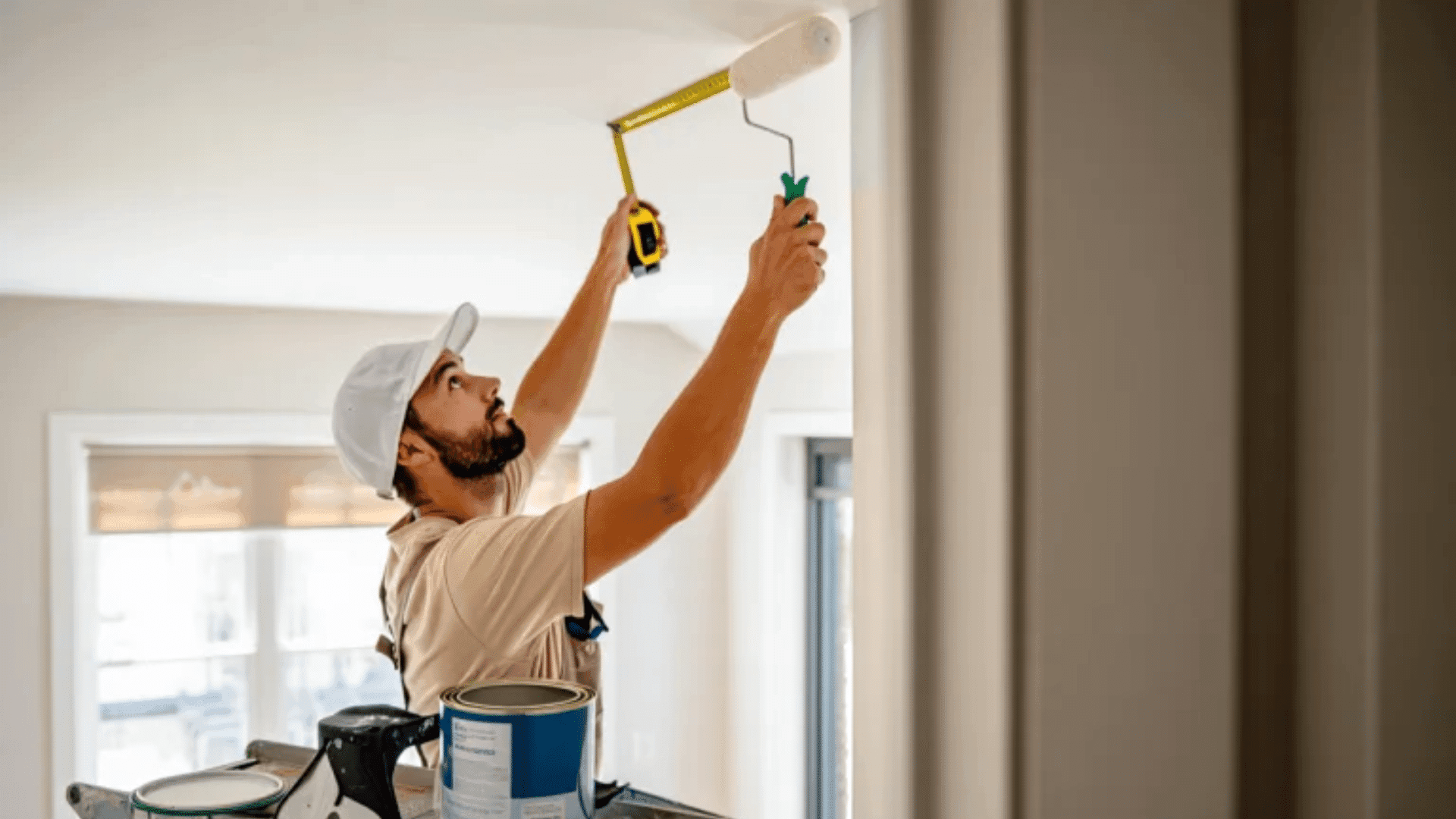
Getting the Right Ceiling Measurements
Measuring your ceiling is easy but important. You need good measurements to buy just enough paint for your project. This helps you avoid wasting money on extra paint or making another trip to the store.
- Measure the length and width of your room in feet using a tape measure
- Multiply these two numbers to get the ceiling area in square feet
- Don’t forget to measure any closets or alcoves that are part of the ceiling
- For oddly shaped rooms, break the ceiling into rectangles and add the areas together
- Remove the area of any large fixtures like ceiling fans or built-in lights
How Much Paint Do You Need for One or Two Coats?
Once you know your ceiling’s square footage, you can calculate how much paint to buy. One coat of most ceiling paint covers about 350-400 square feet per gallon.
For a standard 12×12 foot bedroom (144 square feet), you’ll need about half a gallon for one coat. Suppose you’re covering a dark color or have a textured ceiling, plan for two coats.
If so, buy a full gallon of paint for your 144-square-foot ceiling. Always check the paint can for exact coverage information.
Factors that Affect Paint Quantity
- Rough and Textured Walls: Rough or textured walls absorb more paint than smooth surfaces. Add 10-15% more paint for light textures and up to 30% for heavy textures like popcorn ceilings.
- Switching Between Light and Dark Colors: Dramatic color changes need extra coats. Going from dark to light is especially challenging and may require 2-3 coats for complete coverage.
- Benefits of Using a Primer: A good primer seals porous surfaces and creates an even base. Eliminating an extra coat can reduce the total paint needed, saving both time and money.
- Primer’s Role in Paint Savings: Primer provides better adhesion and a uniform surface. For major color changes, tinting your primer to match your final color can often eliminate one full coat of paint.
Getting the Right Paint Amount with Online Tools
Using a Paint Calculator Effectively
Paint calculators take the guesswork out of buying supplies. These simple online tools help you avoid wasting money on extra paint or making multiple trips to the store. Here’s how to use one:
- Measure your bedroom’s length and width in feet
- Enter your measurements into the calculator
- Select your surface type (smooth, textured, etc.)
- Choose how many coats of paint you plan to apply
- Review the results showing how many gallons you’ll need
What Changes Your Paint Needs?
Several factors can affect how much paint you’ll need. Wall condition matters—new drywall soaks up more paint than painted walls.
Room features like doors and windows reduce the paintable area. The application method affects coverage, too—rollers use more paint than sprayers.
Paint quality is important – premium paints often cover better with fewer coats. Always add 10% extra for touch-ups or mistakes.
Paint Types and How Well They Cover
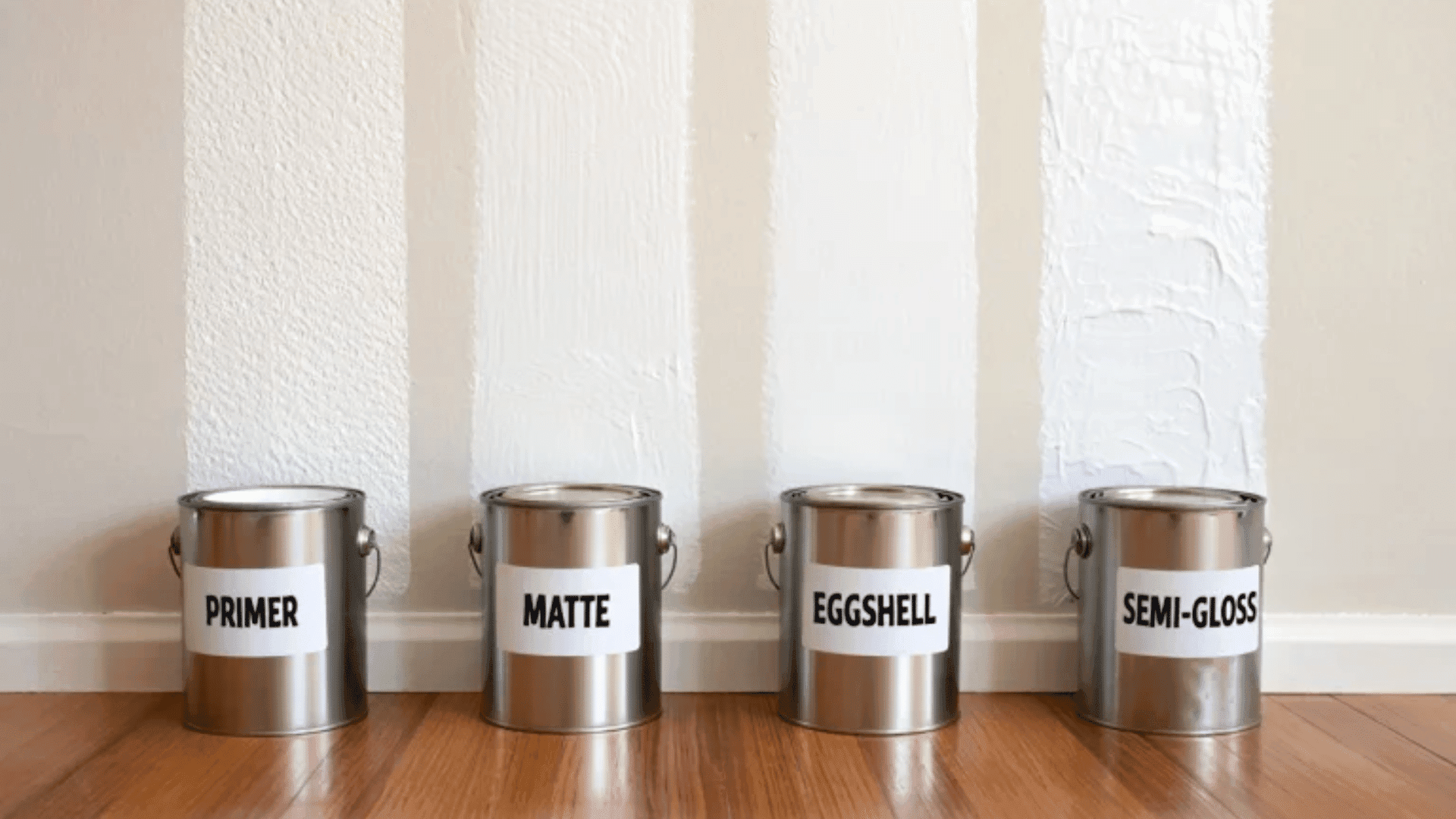
Interior vs. Exterior Paint
| FEATURE | INTERIOR PAINT | EXTERIOR PAINT |
|---|---|---|
| Purpose | Made for indoor rooms | Made for outdoor surfaces |
| Chemical Content | Fewer harsh chemicals | Tougher chemicals to withstand weather |
| Fume Levels | Releases fewer fumes | Releases more fumes |
| Durability | Suitable for indoor conditions | Tougher and resistant to weather elements |
| Coverage | Covers 350–400 square feet per gallon (smooth surfaces) | Often provides better coverage but is not safe for bedroom walls |
| Safety for Bedroom Walls | Safe for use in bedrooms | Not suitable for bedroom walls |
| Label Check | Always check the label for exact coverage info | Always check the label for exact coverage info |
Best Paint Options for Your Bedroom Project
The type of paint used matters a lot when determining the amount of paint to use for a bedroom. Flat paint hides flaws better on ceilings but covers less area.
For walls, eggshell and satin finishes are easy to clean and usually cover 350-400 square feet per gallon.
Darker colors may need more coats. Most average bedrooms (12×12 feet) need 1-2 gallons for complete coverage, including walls and ceiling.
How Much Paint for Trim, Doors, and Windows?
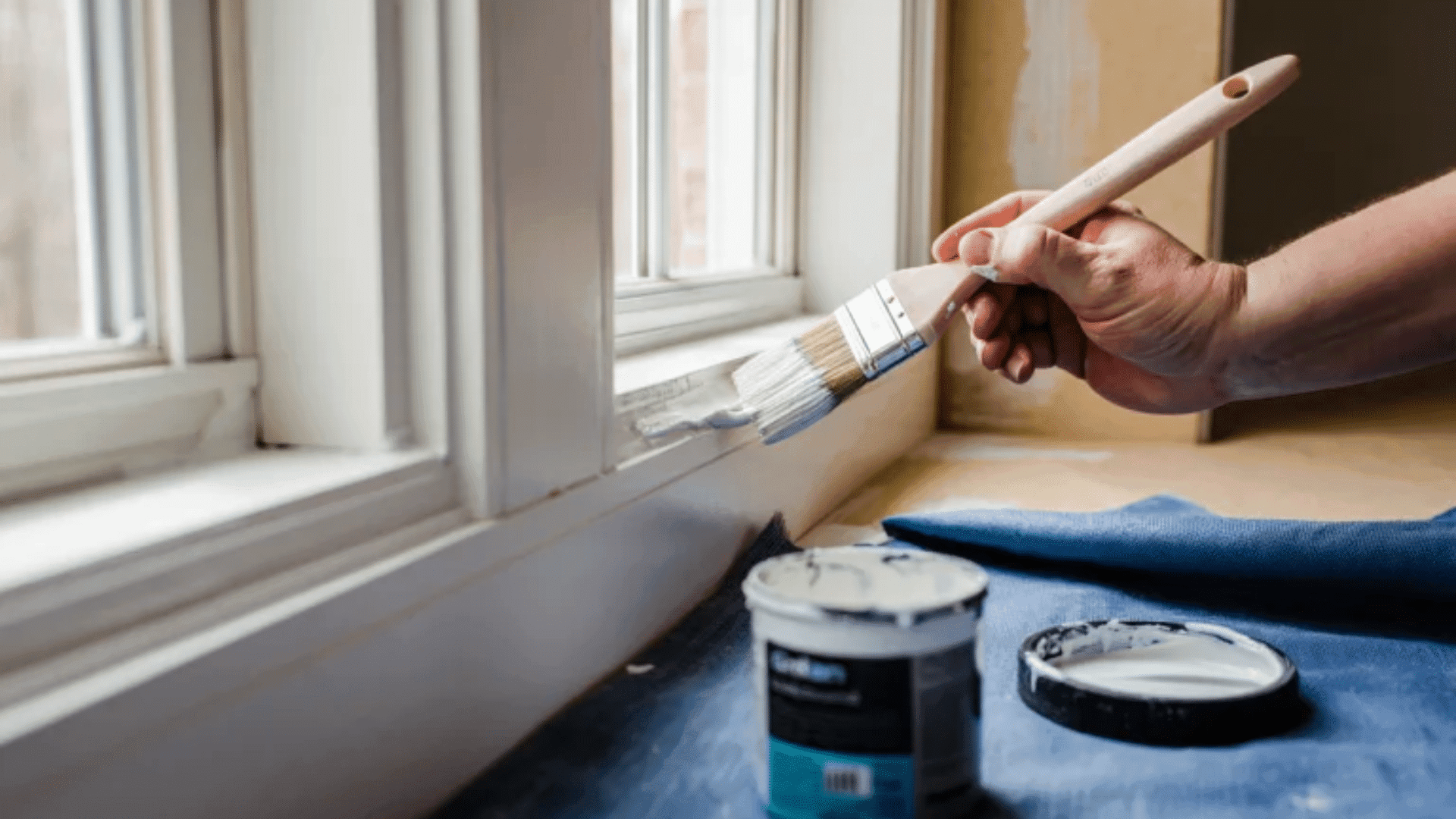
Estimating Paint for Trim and Moldings
To figure out how much paint you need for the trim, measure the total length of all baseboards, crown moldings, and chair rails in feet.
For each 100 feet of trim that’s about 3-4 inches wide, you’ll need about 1/2 gallon of paint. A standard room (12′ x 12′) has roughly 50 feet of baseboard.
Remember to count both sides of the door trim! Most trim needs two coats, so double your paint amount if you’re covering dark colors or bare wood.
Paint for Doors and Window Frames
You’ll need to plan your paint carefully for doors and windows. Remember that glossy or semi-gloss paints work best for trim because they’re easier to clean.
Measurements:
- Standard interior door (80″ x 32″): 1/4 gallon per coat per door
- Standard window frame: 1/8 gallon per coat per window
- Average home with 10 windows and 8 doors: about 2 gallons total
- Remember to double these amounts if painting both sides of doors
Helpful Tips for Painting Success
Always Buy Extra for Later Touch-Ups: Keep some extra paint handy for fixes later on. Buy about 10% more than you think you need.
Store leftover paint in a cool, dry place with the lid tightly closed. Label each can with the room name and the date you painted.
Special Walls Need Special Attention: Bold or textured walls need more paint than regular walls. Add 20% more paint for dark colors covering light ones.
Textured surfaces can use up to 30% more paint. Measure these areas separately from your regular walls.
Smart Ways to Never Run Out: Plan to avoid paint shortages. Buy all your paint at once, so the colors match perfectly.
Write down the paint name, brand, and color code. Complete one whole wall before taking breaks to avoid visible lines where wet paint meets dry.
Summing It Up
Knowing how much paint a bedroom needs makes your project much easier. Measure all surfaces carefully, and consider using online calculators for accuracy.
Account for doors, windows, and wall textures that affect your paint quantity. Always buy about 10% extra for touch-ups and store leftovers properly with clear labels.
Premium paints often require fewer coats, saving you time despite their higher cost. Primer is your friend for big color changes—it creates an even base that reduces the total paint needed.
Proper calculations ensure a smooth, successful bedroom makeover that looks professional and lasts for years if you’re painting walls, ceilings, or trim.
Don’t just dream in color—calculate, create, and conquer your bedroom makeover today!

